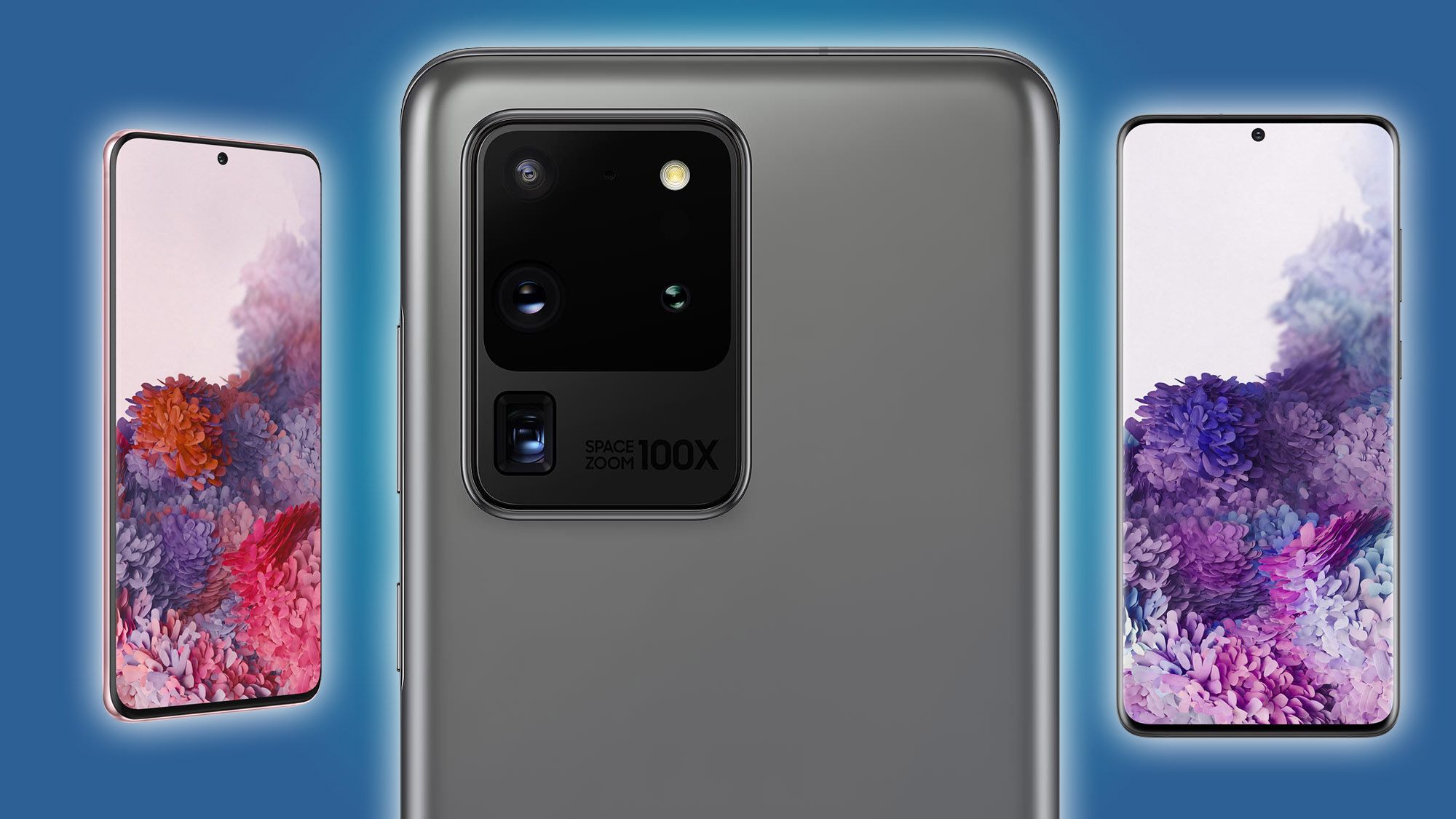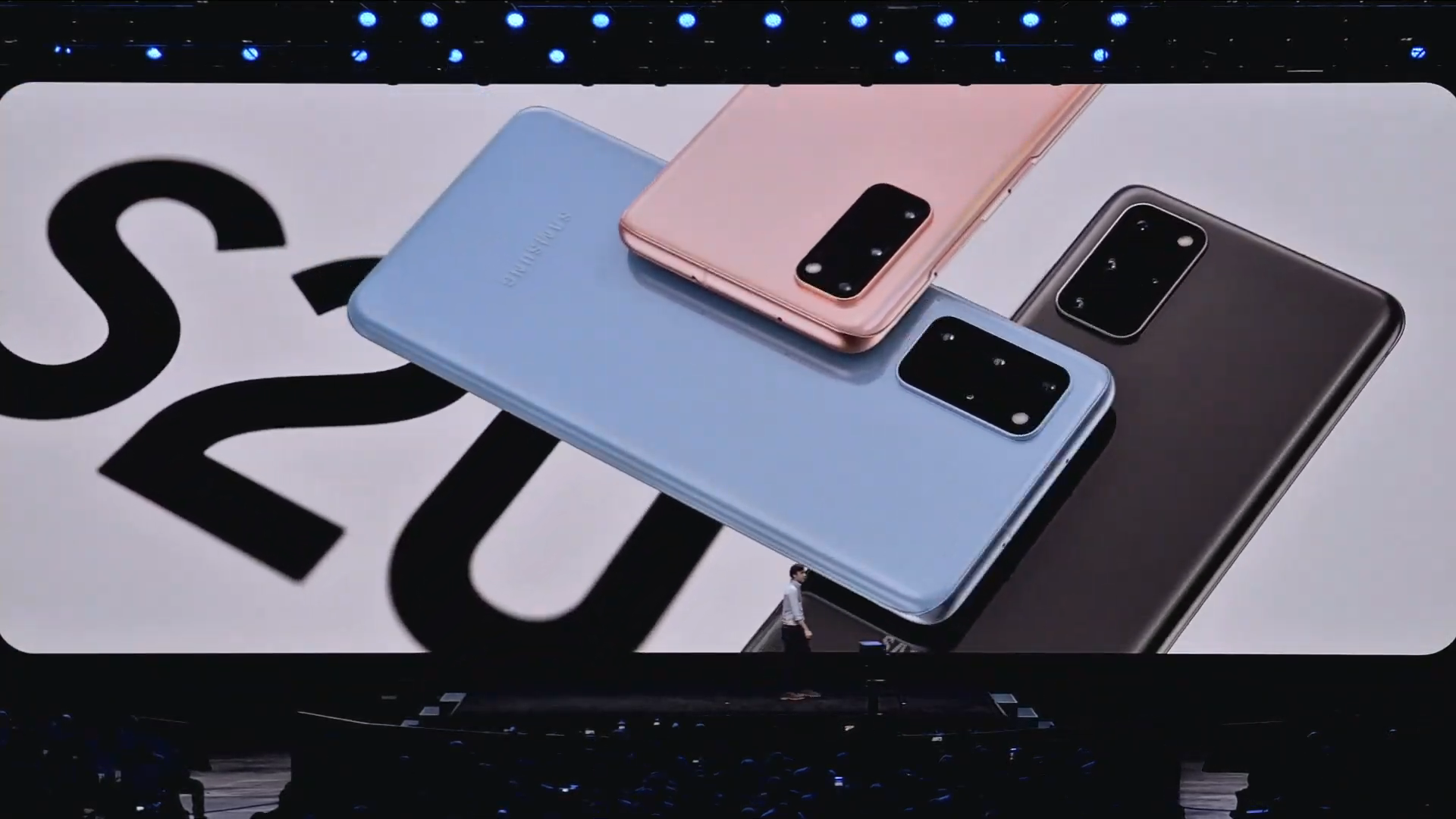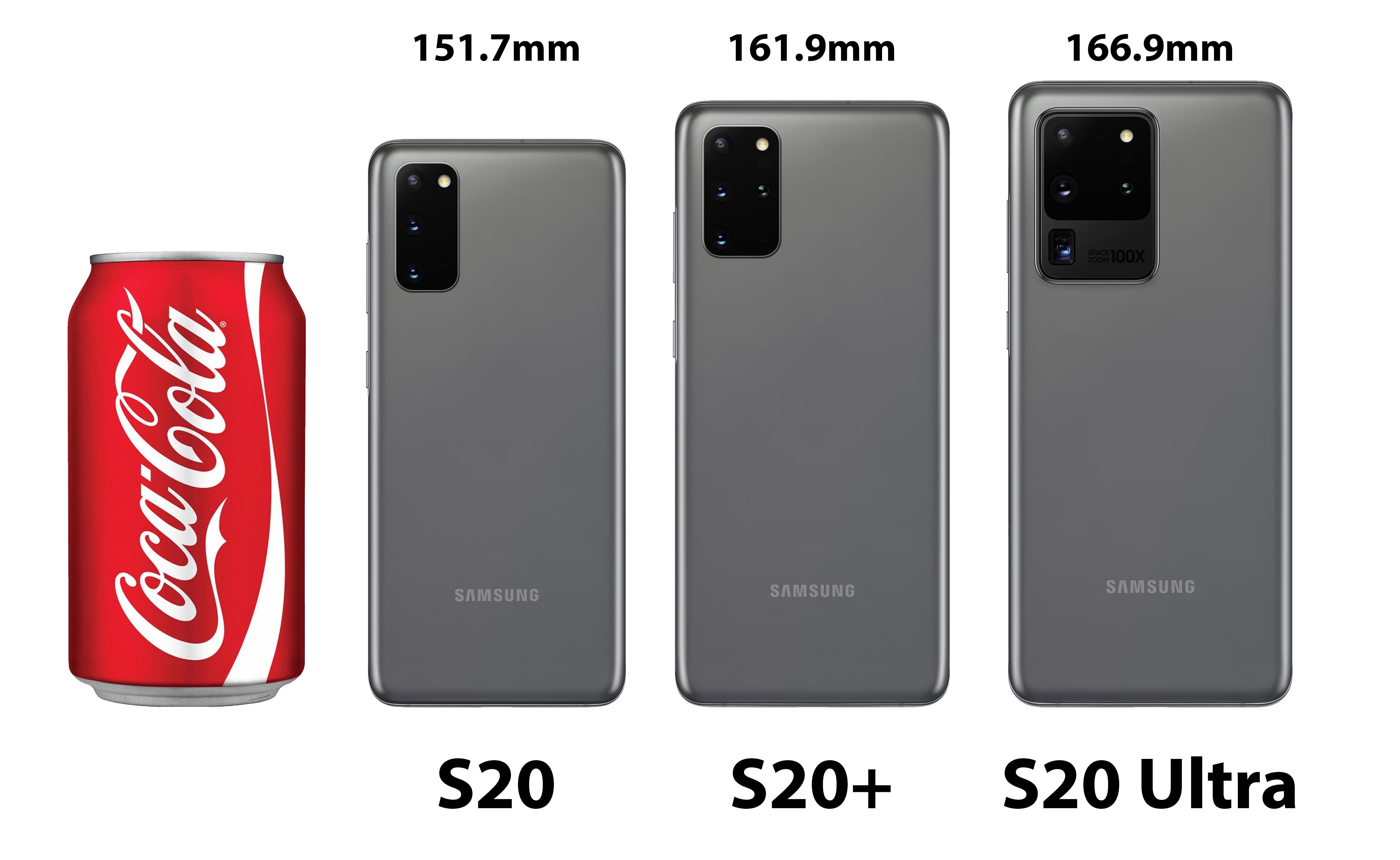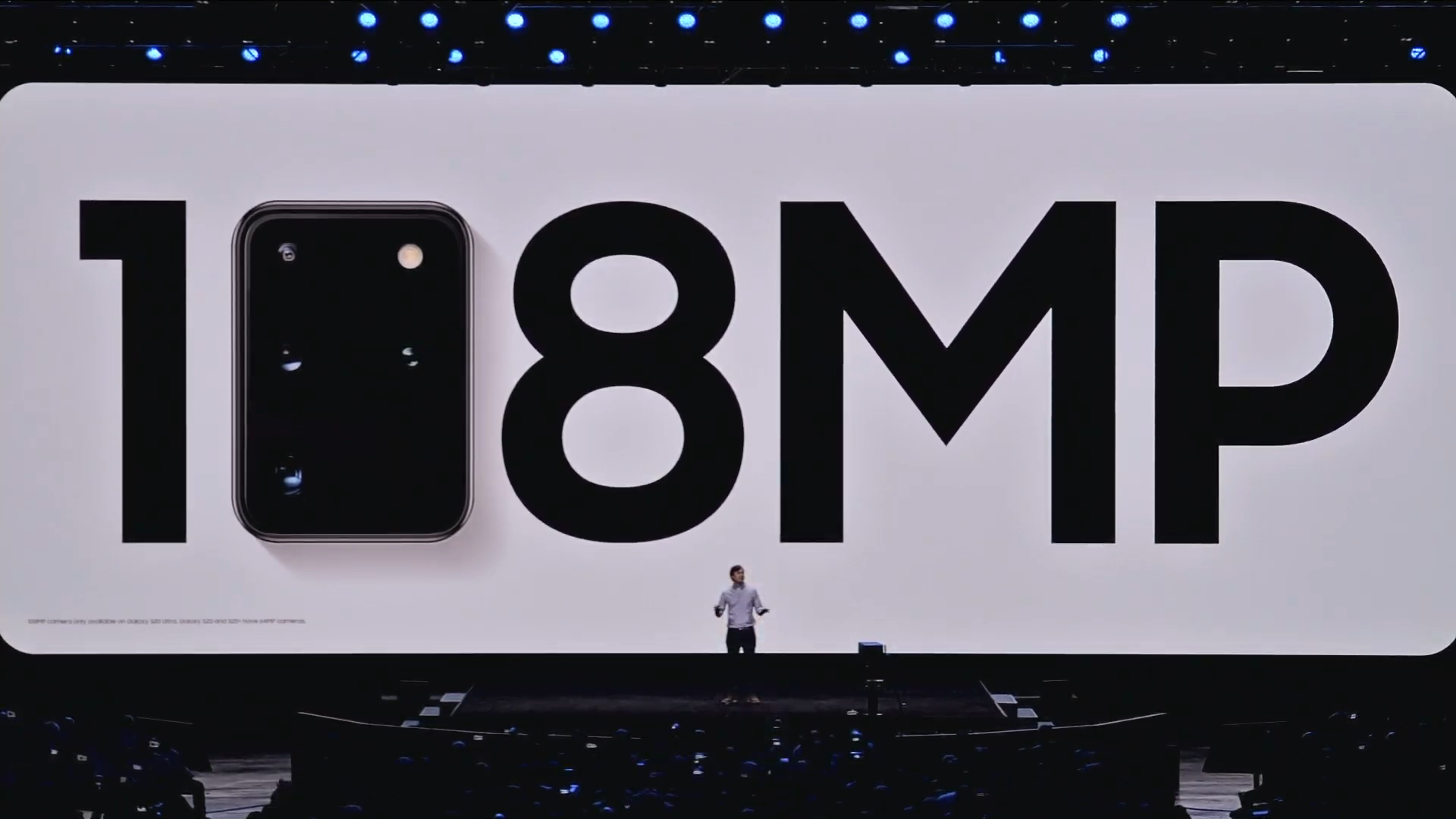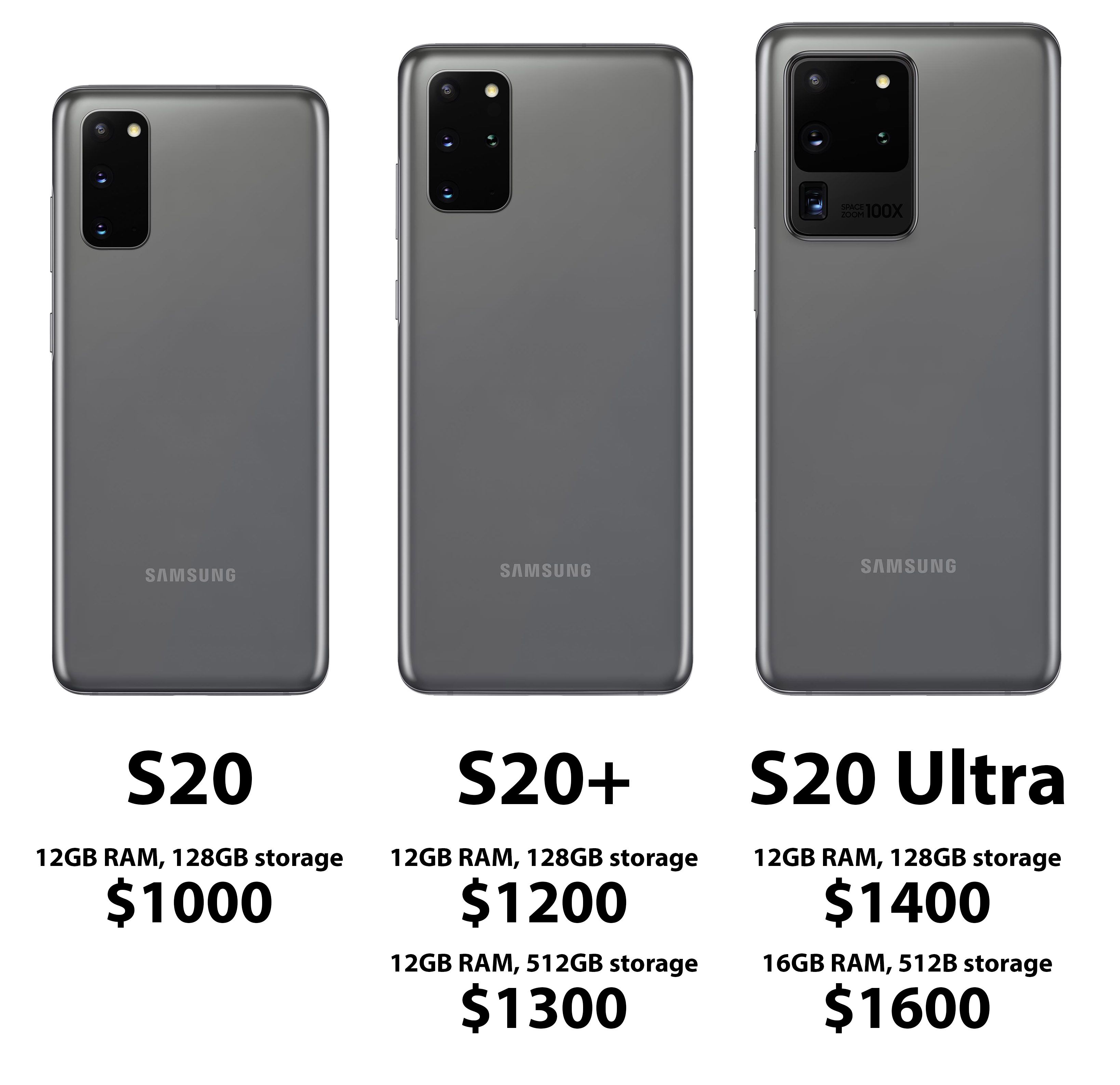If you already have your heart set on the new Samsung flagship phone, you've made up your mind about your brand. But you still have to deal with a choice between three pricey models: the standard S20, the larger S20+, and the gigantic S20 Ultra. Which one is for you? Let's break it down.
Size and Screen
The Galaxy S20, S20+, and S20 Ultra have screen sizes of 6.3, 6.7, and 6.9 inches diagonally, respectively. All of them use the same 120Hz AMOLED panel tech, at the same "Quad HD+" resolution. That's between standard 1080p and 4K, stretched out a bit for the new standard of taller screens.
They're all big phones, but obviously you'll want to know the relative sizes. The S20 is 151.7mm tall, a hair under six inches. The S20+ is 161.9, the Ultra is 166.9. So it's about the difference between the width of an adult's finger from the smallest to largest.
Need a more immediate visual? Here are all of them, compared to a Coke can.
If the size is a particular concern for you, either for use with your hand size or fitting into your pocket, we'd recommend getting your hands on all three models before they release. Best Buy and carrier stores should have demo models available well before the launch on March 6th.
Storage and RAM
All three models of the S20 come with a capacious 12 GB of RAM, 128 GB of storage, and a MicroSD card slot. But the S20+ can be upgraded to 512 GB of storage (an extra $100) and the S20 Ultra gets a model with both boosted RAM and storage, 16 GB and 512 GB (+$200). They all use the same high-end processor, though where you buy it will probably determine whether it uses a Qualcomm or Snapdragon chip. All models will have 5G capability.
If storage is all you're looking for, adding a big MicroSD card will be the cheapest way to go. But if you use a Galaxy phone now and often find your apps closing in the background, that extra RAM might be enough to warrant an upgrade to the Ultra, especially if you're already considering it for the super cameras.
Battery Life
The S20 series starts at a pretty beefy 4000 mAh battery for the S20, then goes in steps for the S20+ at 4500 mAh and S20 Ultra at an even 5000 mAh. Assuming similar usage, the bigger phones should last a little longer on the same charge, since the screen isn't pushing any more pixels and the power drain on AMOLED panels is pretty efficient.
There is one differentiating factor here: charging speed. The S20 and S20+ support charging at 25 watts, which the charger in the box is rated for. But the S20 Ultra can charge even faster at 45 watts---that's getting up into ultraportable laptop range. According to Samsung's press release, the S20 Ultra includes the same charger as the other phones, so you'll have to pay even more for that fast-charging privilege.
Cameras
Here's the big differentiation. The S20 comes with three rear cameras, the S20+ and S20 Ultra have four. But how those cameras are used is a bit different. Here's the direct comparison from Samsung's press release---also note that the S20 Ultra gets an upgraded front-facing cam. All three phones can capture 8K video.
So, the S20 and S20+ are pretty similar, but the middle child gets an extra "Depth Vision" sensor. This is a feature introduced on the S10 series last year: it helps the other sensors measure the distance from the phone to an outside object. In layman's terms, it allows the phone to do more accurate background and foreground separation, in both standard shooting and video. In even shorter terms it uses some really fancy software to make images look better.
The S20 Ultra is Samsung's answer to the iPhone 11 Pro, with its wide-angle camera upgraded to an insane 108 megapixels. Combined with a 48MP telephoto lens, the level of detail the phone can capture is pretty astounding.
Those extra megapixels allow Samsung to boast of a "100X zoom level" on the S20 Ultra, versus "30X zoom" on the other models. But keep in mind, this is essentially digital cropping. The optical elements in smartphone cameras are amazing, but they're not magical, and they can't replicate the telephoto powers of a full DSLR or mirrorless camera yet. The more you zoom (read: crop) that massive image, the lower your quality will be.
In short, that super zoom function probably isn't worth $200-400 extra, unless you frequently find yourself trying to pull the "zoom and enhance" trick from every detective show.
Price
For your convenience, here's a comparison of the S20 models and upgrades with prices.
Which One is for You?
The S20 phones are a lot closer in capability than the S10 or Note 10 series models. To be perfectly honest, there's a lot of grey area here, and only a few use cases where one specific model is the clear winner.
If you have small hands or small pockets: Galaxy S20, definitely. Even that might be too big for you---maybe the Galaxy Z Flip is more appealing?
If you're on a budget: None, really, but the Galaxy S20 is the cheapest. You can bring that price down with trade-ins, and both Samsung and retailer partners offer financing. Or you could drop down to the S10 series, which just got a price cut.
If you want the most storage at the smallest price: the Galaxy S20+ offers a $100 upgrade to 512GB. But it's worth noting that all three support up to 1TB MicroSD cards.
If you want that insane zoom-crop: Galaxy S20 Ultra. It's dramatically improved over the other models.
If you want to run ALL THE APPS all the time: go for the Galaxy S20 Ultra with the upgraded storage and RAM. 16GB in a phone is insane, but we're not going to judge you.
If you're constantly running out of battery: All three phones have super-fast charging, but the Galaxy S20 Ultra has the largest battery and almost double the charging speed of the others, with the right adapter.

